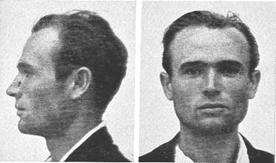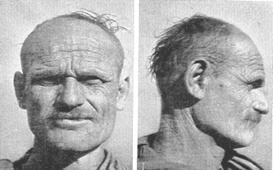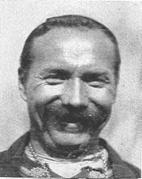|
(Photographic Supplement, Plate 8)
Evidence of the survival of an extremely tall, brachycephalized, Upper
Palaeolithic stock is found to a lesser extent in the Carpathians; and to a
greater, in the nucleus of the Dinaric Alpine region, from Bosnia to
northern Albania, and centered in Montenegro. Although the presence of these
nuclei cannot now be fully explained, it seems probable that they represent
local survivals and reŽmergences of relatively unreduced Upper Palaeolithic
populations. The Montenegrins are the tallest people in Europe; their
tallness does not, however, imply a thin or linear build; their bodies are
frequently thick-set, lateral in constitutional type.
FIG. 2 (3 views). A Montenegrin of aristocratic lineage; in the main an oversized, Upper Palaeolithic survivor, but brunet in pigmentation, like many of the Serbs to whom the Montenegrins are closely related, and who do not, as a rule, possess the over-sized characters of their mountain kinsmen.
FIG.3 (2 views, R. W. Ehrich photo). A blond Montenegrin with extreme width of the cranial vault and mandible.
FIG.4 (1 view); An Albanian from Malsia Ž MadhŽ, near the Montenegrin border.
FIG. 5 (2 views). An Albanian from the clan of Shoshi in the isolated mountain tribe of Dukagin. This man is a blond giant with a broad, heavy-boned body; his face is shorter than the width of his mandible. The unreduced Upper Palaeolithic character of the local mountain type is clearly seen in this individual.
FIG. 6 (1 view). A tall, portly man from Malsia Ž MadhŽ; his facial features show an approach to those of the smaller, less rugged form of the Alpine race, which is particularly strong in southern Albania.
|





